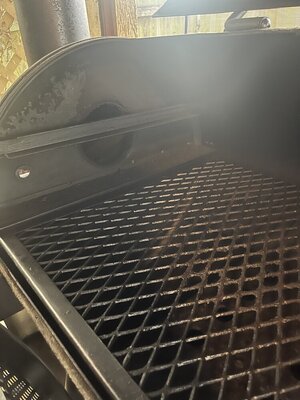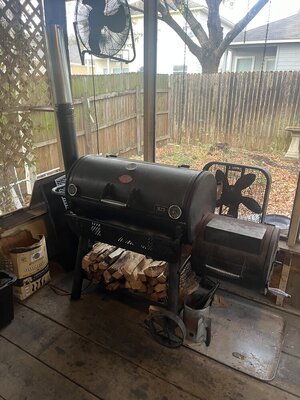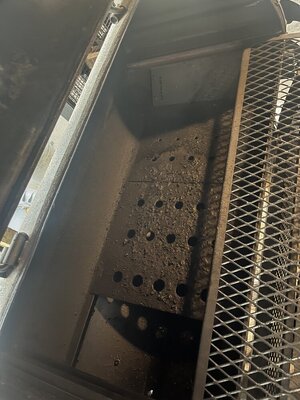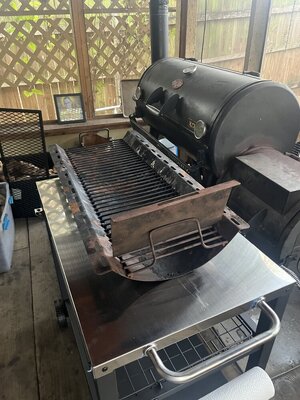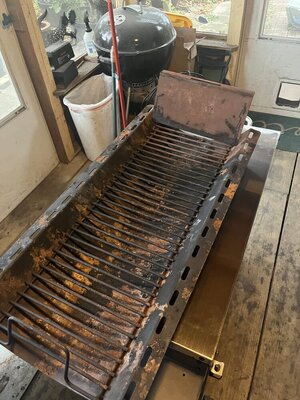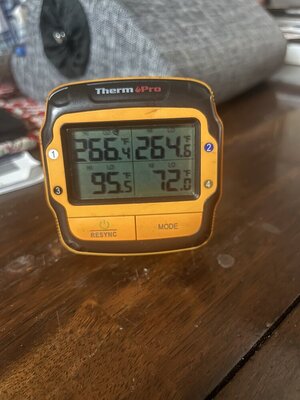- Jan 18, 2020
- 1,315
- 1,070
After my most recent stickburner cook, I find that while I can maintain the air/smoke temp in the cook chamber like I want, based on how the brisket turned out there's too much radiant heat coming up from the tuning plate, which distance I estimate to be 8 to 10 inches.
Question is what is the ideal distance from a tuning plate and the cook grate?
On pro rigs like Franklin, Goldie's and many others, how far "up in the air" is the cook grate from the source of radiant heat?
I suspect since they probably don't have to use a tuning plate, the distance is more than 12 inches..
I think I'm going to buy a cheap select grade brisket and cook with no tuning plate, and perhaps no deflector just to see how the underside of the brisket cooks.
Now the subject of digital probe placement in the cook chamber comes up.
Potato or aluminum foil or rubber mounted post or laying flat on the cook grate on the expanded metal or hanging off the underside of the cook grate perhaps?
Lastly, how well do the digital temp probes sample radiant heat compared to smoke temp, or is there a difference and/or does the difference matter?
Question is what is the ideal distance from a tuning plate and the cook grate?
On pro rigs like Franklin, Goldie's and many others, how far "up in the air" is the cook grate from the source of radiant heat?
I suspect since they probably don't have to use a tuning plate, the distance is more than 12 inches..
I think I'm going to buy a cheap select grade brisket and cook with no tuning plate, and perhaps no deflector just to see how the underside of the brisket cooks.
Now the subject of digital probe placement in the cook chamber comes up.
Potato or aluminum foil or rubber mounted post or laying flat on the cook grate on the expanded metal or hanging off the underside of the cook grate perhaps?
Lastly, how well do the digital temp probes sample radiant heat compared to smoke temp, or is there a difference and/or does the difference matter?


